Ministry of Power
“Developed countries should cut down emissions first, this is the voice of the global South”: Union Power and New & Renewable Energy Minister
Focus should be on reducing emissions, not choice of fuel; discussion on coal is a dangerous diversion: Union Power and NRE Minister R. K. Singh
“The world needs to think about 733 million people in Africa who do not have electricity access”
Union Power & NRE Minister urges the Japanese Industry to invest in India’s Power Sector as well as source their requirements from India
प्रविष्टि तिथि:
30 NOV 2023 9:39PM by PIB Delhi
The Union Minister for Power and New & Renewable Energy Shri R. K. Singh has said that the dialogue at COP28 should be about cutting down emissions, and that it is for the developed countries to cut down emissions first. “Developed countries are emitting at a faster pace than other countries. 80% of total legacy carbon dioxide load is contributed by developed countries, whose population is one third of global population. On the other hand, India’s contribution to the carbon dioxide load is only 3%, though our population is 17% of world population. Our per capita emissions are 2.19 tons per year or one third of global average, while the global per capita average is 6.8 tons per year. So, it is for developed countries whose per capita emissions are 2 – 3 times the global average, to cut down emissions first. That is what the discussion on COP should be about. This is the voice of the global south.” The Minister was speaking at the inaugural session of Indo Japan Conclave 2023, organized by The India Today Group, in New Delhi on November 30, 2023.
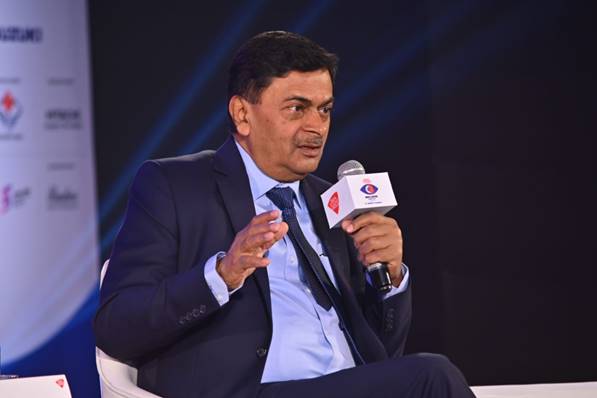
“High time the whole world attacked the central problem of reducing carbon emissions”
Shri Singh said that the focus should be on reducing carbon emissions, and not on the choice of fuel. “The whole battle the world is waging is on reducing emissions. It is high time the world unitedly attacked this central problem - from where the emissions come. Whether emissions come from petroleum, gas or coal is irrelevant; the question is how much one is emitting, that is what is causing the global rise in temperatures.”
“Discussion on coal a dangerous diversion by developed countries to shift focus away from emissions”
The Minister said that discussion on coal is a dangerous diversion adopted by some developed countries to shift focus away from their emissions. “India’s attempt always has been on bringing back focus on where it should be – i.e., emissions reduction. And those who are emitting at the highest rate should reduce emissions first. Overall situation is that if we want to limit global rise in temperature to 1.5 degrees, the available carbon space left is just about 250 gigatons of carbon; the world is emitting at the rate of 53 gigatons every year, which gives us just 5 years. If we need to remain below this limit, then the global citizen should not be emitting more than 6 tons per year. While we in India are emitting only 2.19, there are countries where the per capita emissions are 12 – 20 tons per year. Quantum of per capita emissions needs to be brought down to 6 tons per year as soon as possible, and developing countries need space to develop.”
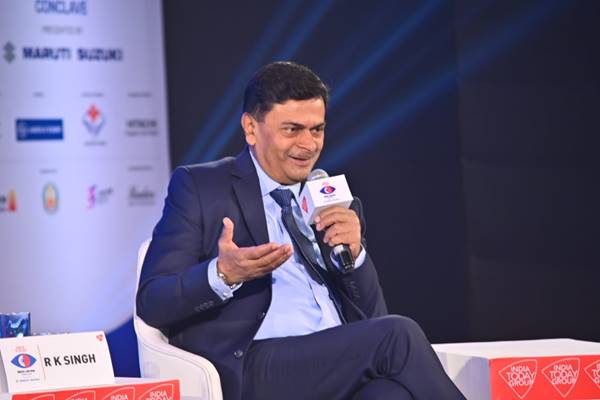
“There cannot be any pressure on India to cut down emissions, India’s rate of energy transition is the fastest in the world”
The Power and New & Renewable Energy Minister said that there cannot be any pressure on India to cut down emissions, since India’s rate of energy transition is the fastest in the world. India has achieved its commitments made at COP, well in advance, adding that India is the only country which has done that. “We achieved our commitment for reduction of emissions intensity in 2019, eleven years in advance, and we shall achieve the updated target set for 2030 as well. We had pledged that we will have 40% of our capacity from non-fossil fuels by 2030, while we reached that target in 2021 itself. Further, we have launched programmes such as Perform Achieve Trade, in which we set targets for industry in making energy efficiency improvements.”
“The world is not thinking about 733 million people in Africa who do not have access to electricity”
The Minister pointed out that we have 733 million people in Africa who do not have access to electricity, and the world is not thinking about them and is instead talking about energy transition. “We cannot have transition without access and we cannot have access without funds.”
“Cannot phase out fossil fuels until storage becomes viable”
The Minister said that storage capacity needs to be augmented and should become viable, for round-the-clock renewable energy. “Developed countries who have been talking about energy transition have not invested in storage manufacturing capacity, which is only about 24 GW in the world. We need storage for round-the-clock renewable energy. We cannot phase out fossil fuels unless we have nuclear or until storage becomes viable. We cannot have energy transition until storage is viable.”
Shri Singh said that India is going to add to the volumes so that price of storage will come down. “We had a PLI for storage, we are setting up storage manufacturing capacities and also floating bids for acquiring capacities. We believe that as we and the world add volumes, the prices will come down.”
The Minister informed that storage is one of the items included in the Clean Energy Partnership. “We are coming up with PLI for setting up storage manufacturing capacity. Supply chain issues are critical for us. Right now, 88% of storage is manufactured in China, 90% of lithium processing is located in China. They have tied up almost 80% of lithium reserves of the world. We are in talks with partner countries such as QUAD countries to tie up lithium reserves. Supply chain for lithium, cobalt, etc. has been skewed; that is why Make in India is important.”
“India will always be a reliable partner from where you can source your requirements”
The Minister expressed confidence that India will also be able to export solar modules. “We have already started exporting efficient solar modules to the United States. We are going to have 150 GW solar cells and modules manufacturing capacity, out of which only about 40 – 50 GW will be required by us, the remaining can be exported. We will always be a reliable partner from where you can source your requirements. We are going to set up manufacturing capacity for electrolyzers.”
“Japan is a close and valued partner, Japan’s investments in India will increase”
The Minister invited Japanese industry to invest in India and to source their requirements from India. “Japan is a close and valued partner. Our strategic interests are absolutely common. We have the same worldview; for us, Japan is a valued friend and brother. We both face the same challenges. We are together. The Japanese have always been very friendly with us, they have always invested in India, their investments will increase and as far as sourcing is considered, I expect that Japan sources its requirements from us rather than from other countries. Other countries may be closer geographically, but we are closer as far as interests are concerned.”
The Minister said that India’s power demand is growing fast and that there shall be no compromise in meeting this demand. “Our demand grew at 20% in August, September and October 2023, which shows that our economy is growing. We shall meet this demand. Our growth will not stumble or stagger due to want of electricity. Despite this, by 2030, we will have 65% of our capacity coming from renewables and we will still be among the lowest per capita emitters in the world.”
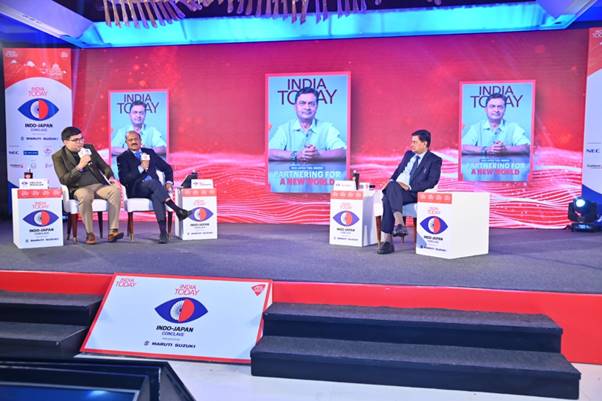
“India’s growing investment in renewables is a great opportunity for Japanese companies to come and compete”
Shri Singh said that India’s growing investment in renewables is a great opportunity for Japanese companies to come and compete. “We have become a world leader in renewables; our total non-fossil fuel capacity is 186 GW, and we have 99 GW under construction. Outside of China, we are the country with the fastest growing renewable capacity in the world. We have emerged as favourite investment destination for renewables. All our bids for renewables are hotly contested. I see this as a great opportunity for Japanese companies to come and compete. Bloomberg categorized us as the most attractive market for investment in renewables.”
The Minister said that India can be the preferred destination for Japan, for sourcing green hydrogen and green ammonia. “We came out with a PLI, as a result of which we have around 48,000 MW of manufacturing capacity being set up in India, right from polysilicon to modules. On green hydrogen, we have emerged as one of the biggest manufacturers in the world. We have 7.8 million tons of green hydrogen capacity at different stages. Our prices will be the most competitive, setting up 1 MW of solar capacity costs around 6 lakh dollars, which is the cheapest in the world. We have a huge and robust grid capable of transferring 116,000 MW from one corner to any other corner in the country. Japan will be looking at a lot of green hydrogen and green ammonia, we should be the preferred country since they will not get it cheaper anywhere else. Our developers are tying up orders all around the world. Agreement is being finalized under clause 6.2 of UNFCCC, to trade in green hydrogen and green ammonia. Once this is finalized, those countries which buy green hydrogen or green ammonia from us will get a part of the carbon credits, this will facilitate Japan in getting carbon credits. Our economy is surging, our demand is surging, our economy will keep growing at around 7% for the next two decades. We have the technology and the modules which are going to be manufactured are going to be the most advanced, with 24% or more efficiency.”
The day-long conclave, on the theme “India-Japan@2030” will see the participation of senior leaders from across the political and economic spectrums of both nations, as well as members of the industry, especially Japanese companies who have a presence in India. It will examine existing ties between the two countries and look at the road forward in terms of deepening cooperation in various spheres, from manufacturing and financial technology to green hydrogen and geopolitics.
Editorial Director (Publishing), India Today Magazine, Shri Raj Chengappa and Deputy Editor, India Today, Shri Anilesh S. Mahajan joined the Minister in conversation for the inaugural session.
The inaugural session can be watched here.
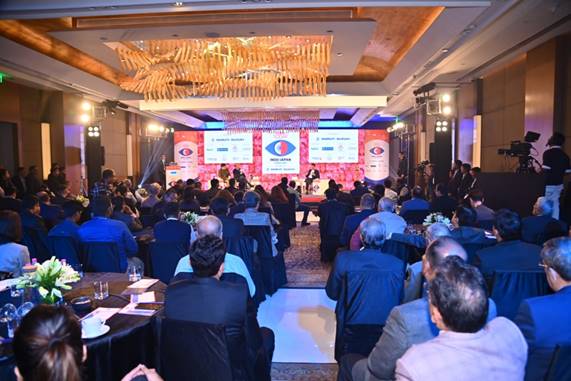
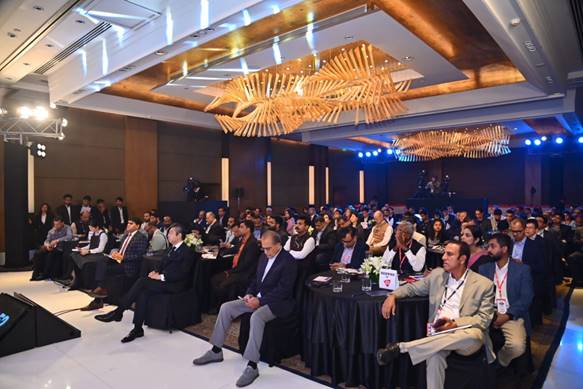
***
PIB DELHI | Alok Mishra / Dheep Joy Mampilly
(रिलीज़ आईडी: 1981355)
आगंतुक पटल : 1717